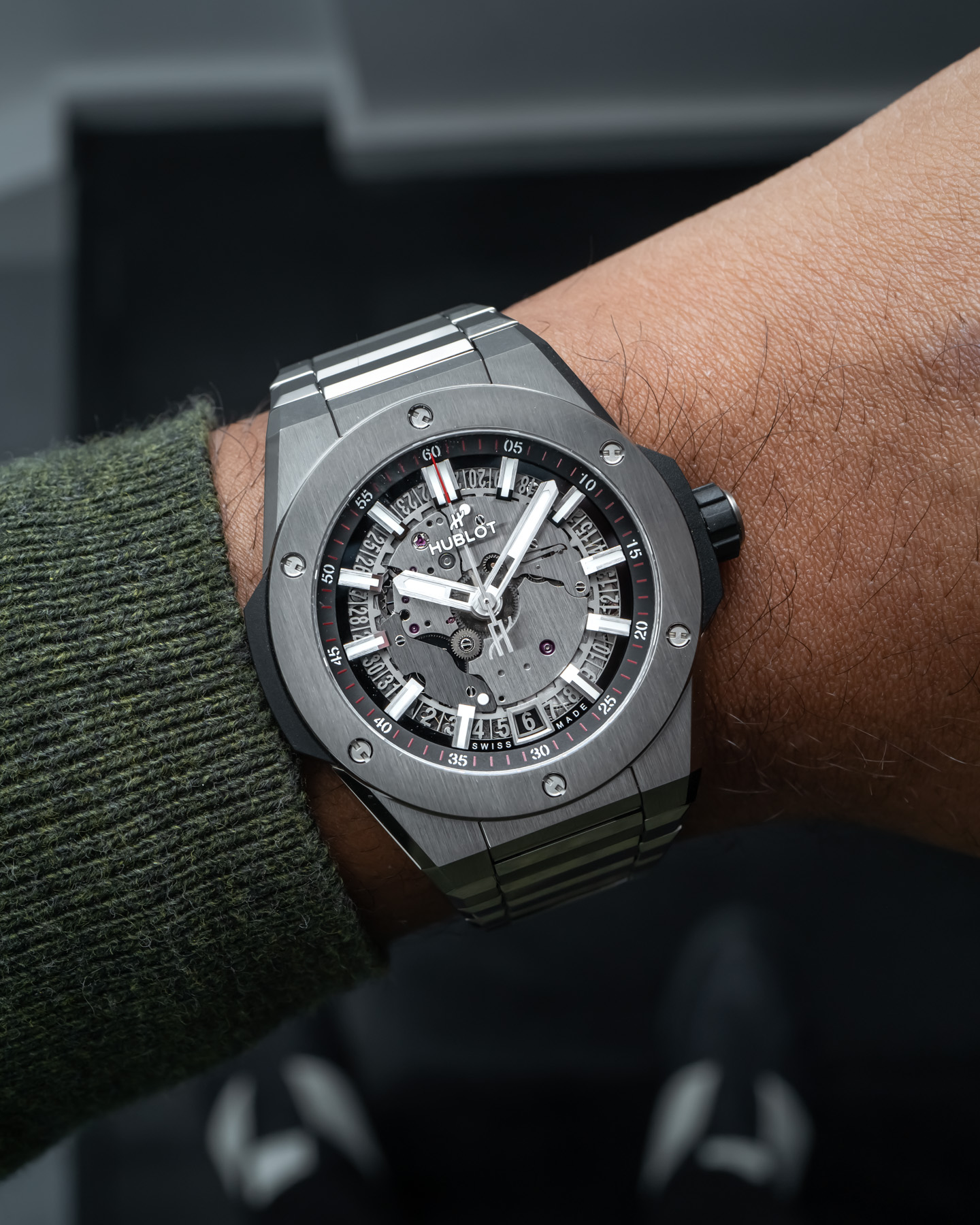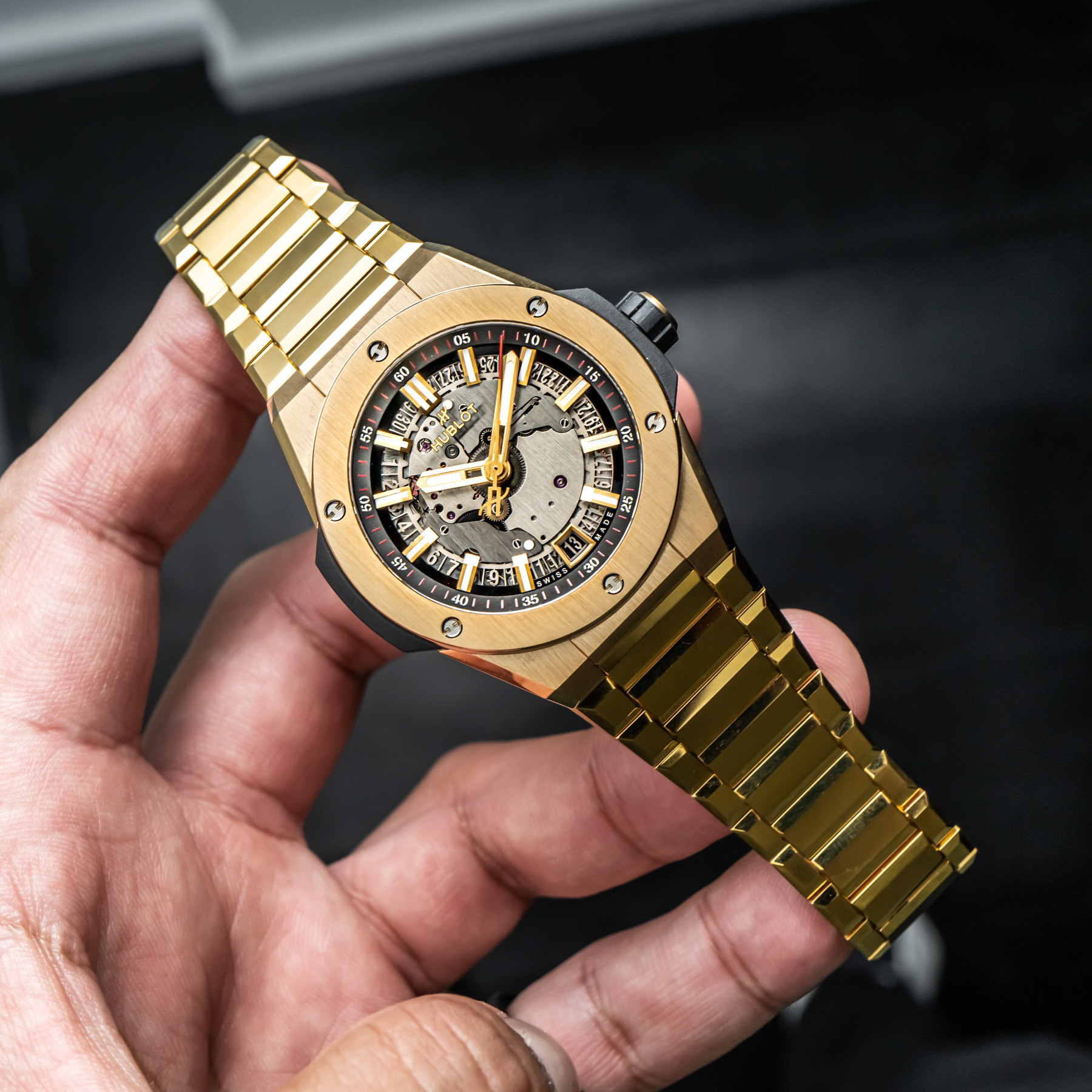
I’ve had high hopes for the Hublot Big Bang Integral ever since I first saw it back at LVMH Watch Week 2020. That debut model was a 42mm chronograph iteration of the Big Bang with a new and excellently finished integrated bracelet. Recently, I got to see the newest — and simplest — addition to the collection with the new Big Bang Integral Time Only watch. There are three variants at launch (titanium, black ceramic, and yellow gold), all of which come in a 40mm wide case for the first time ever.
My initial worry was that this collection might look promising in the press photos but would end up losing that Hublot swagger after shedding not just millimeters from the typical Big Bang but the chronograph complication as well. Those worries were assuaged when I handled them in the metal. A true Big Bang in a sleek, slim, and excellently finished 40mm-wide and 9.25mm-thick case with 100m water resistance is not only possible but is also pretty damn fantastic.
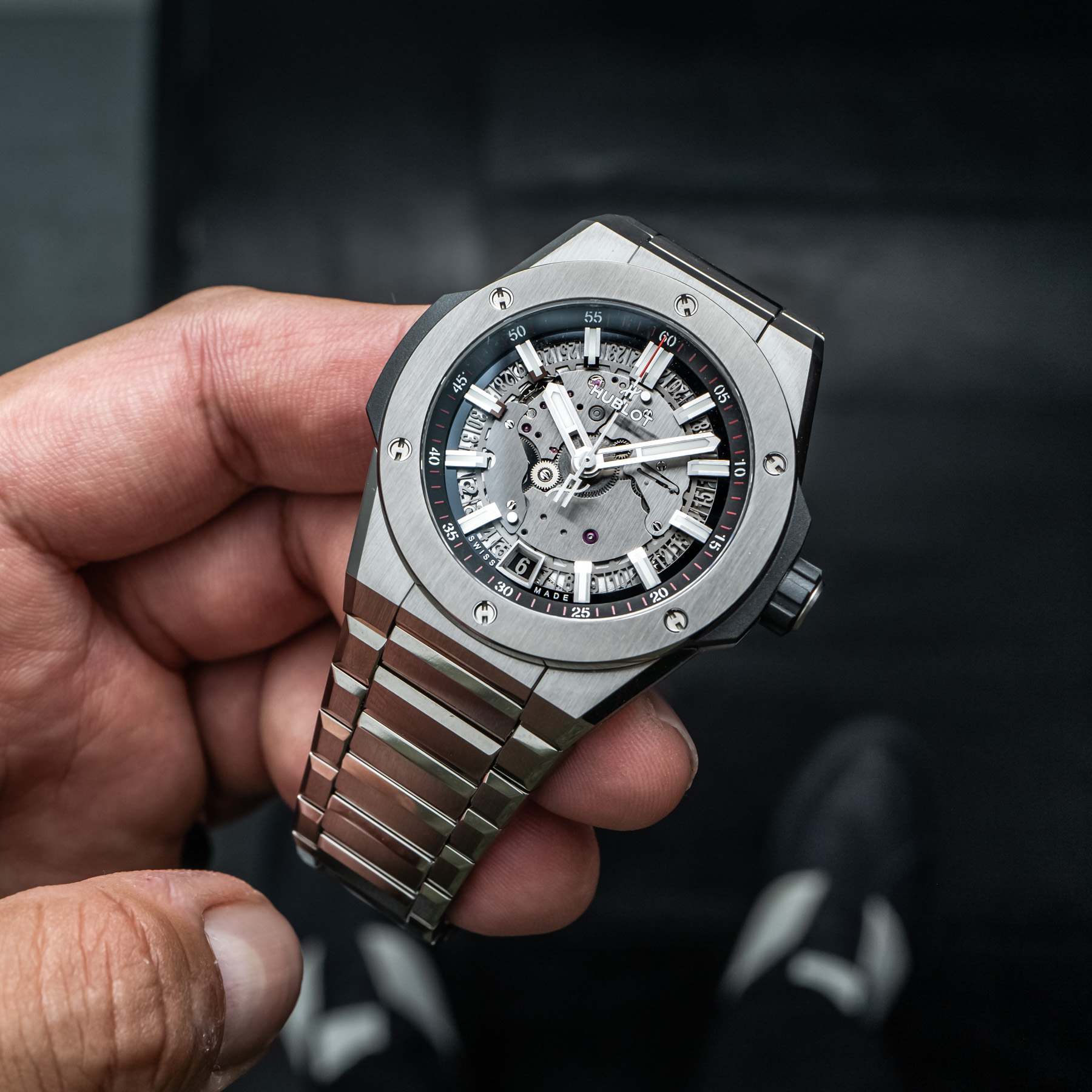
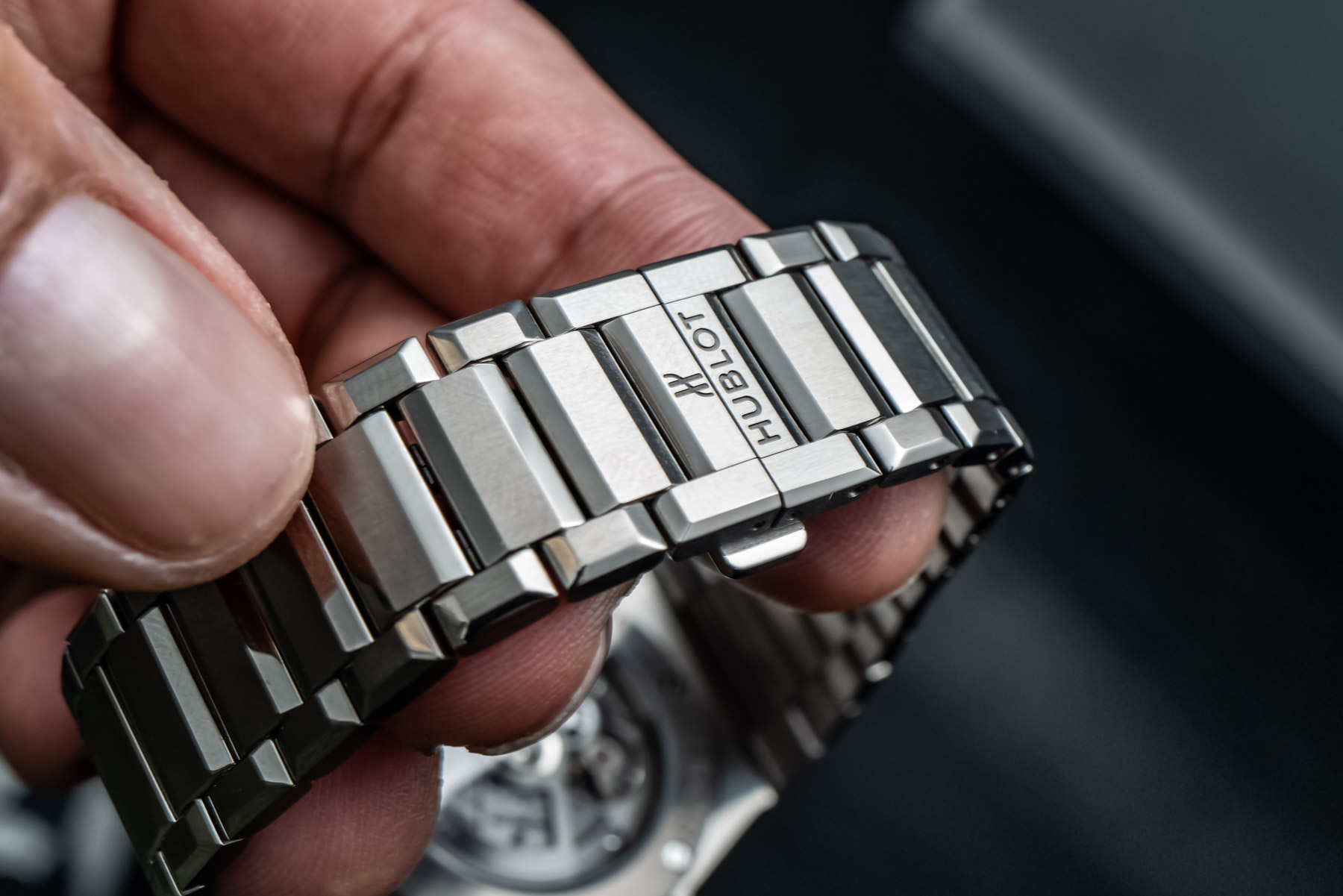
That said, I have to give extra credit to the designers at Hublot who created the bracelet for the Big Bang Integral. With detailed finishes that match the sharp lines on the case, the three-link bracelet has alternating polished and brushed finishes. Each outer and center link have chamfered edges and beveling that reflect an attention to detail that is more concerned with quality than flash. For a brand known for combining precious metal cases with rubber straps, Hublot has done a wonderful job with these bracelets, and I hope we see them proliferate within the brand’s lineup. Micro-adjust would be nice, though.
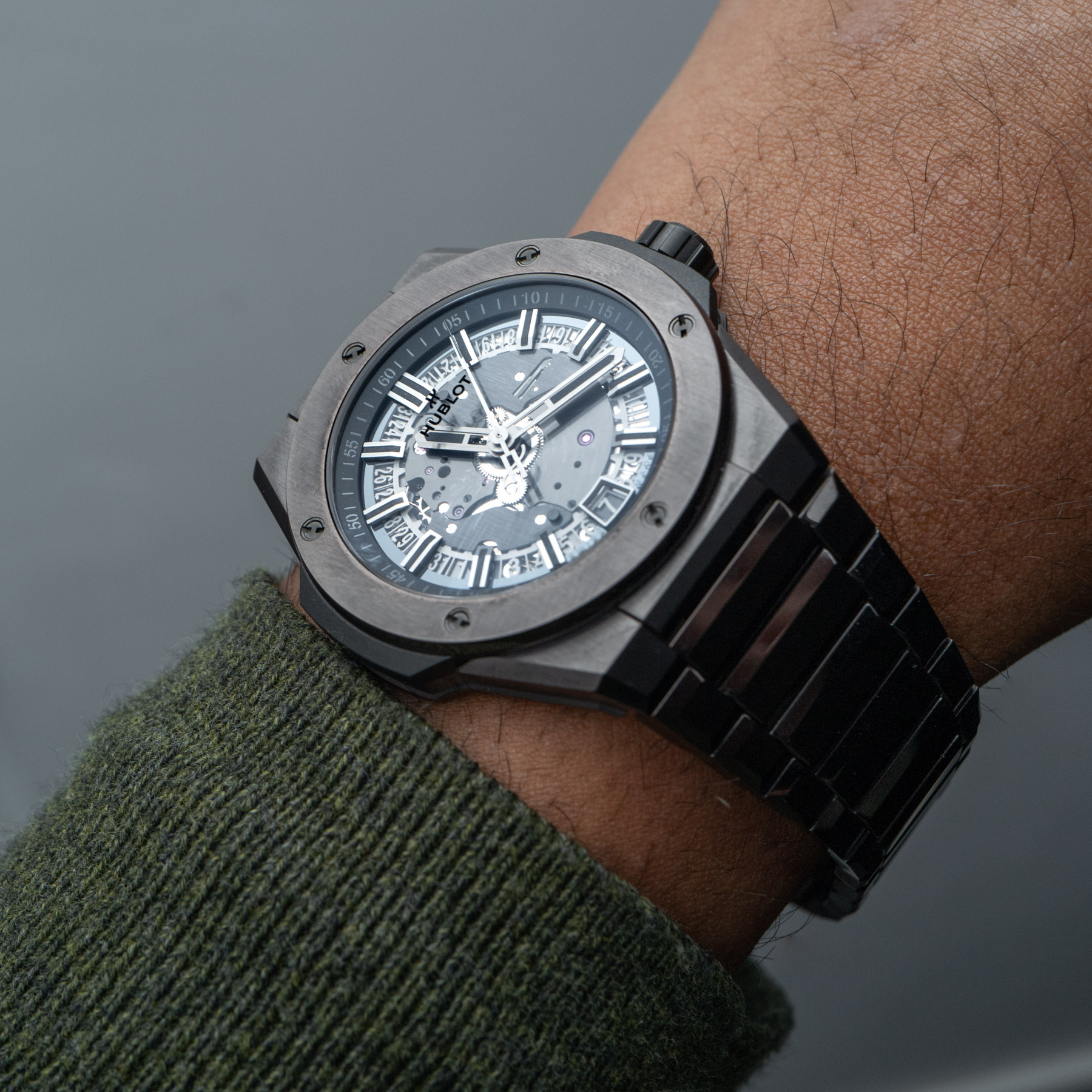
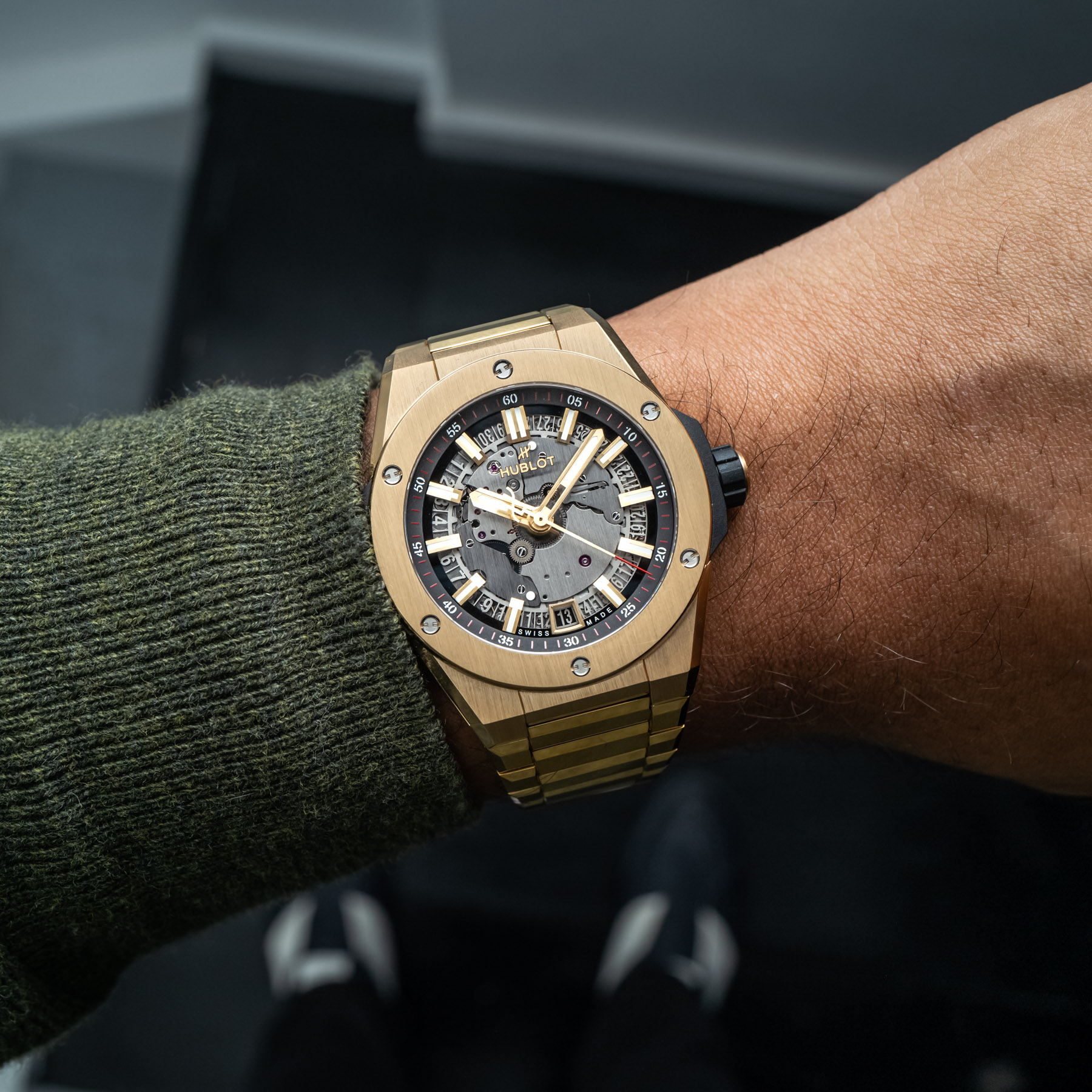
Ok, so I know “Time Only” would typically mean no date but the major takeaway Hublot is communicating is that it’s not a chronograph. In fact, the enthusiast community being so detail-oriented in pointing out the technical inaccuracy of labeling a watch with a date as “time only” likely helped magnify the larger “it’s not a chrono” message. Each of the three variants has large, legible hands that easily contrast against the dial and the seconds hand has that nice Hublot counterweight I love so much. At 6 o’clock is the date window which, while trapezoidal, mirrors the wide 12 o’clock index and is actually quite non-invasive, all things considered. It blends in the with the rest of the dial and doesn’t draw any unnecessary attention to itself. You’ll also notice that the Hublot insignia is not on the dial but done directly on the sapphire crystal (which is the case for many, or even most, Big Bang watches).
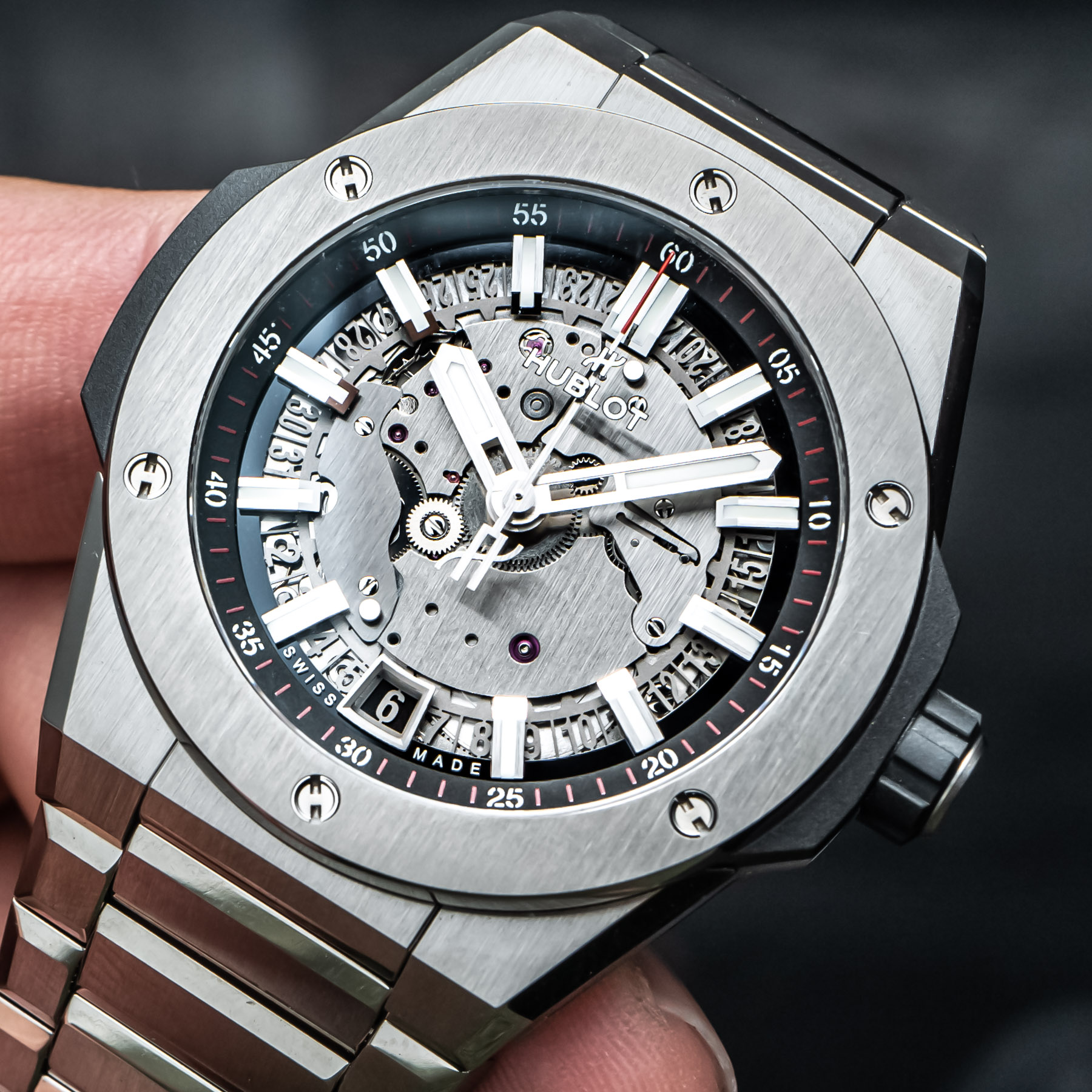
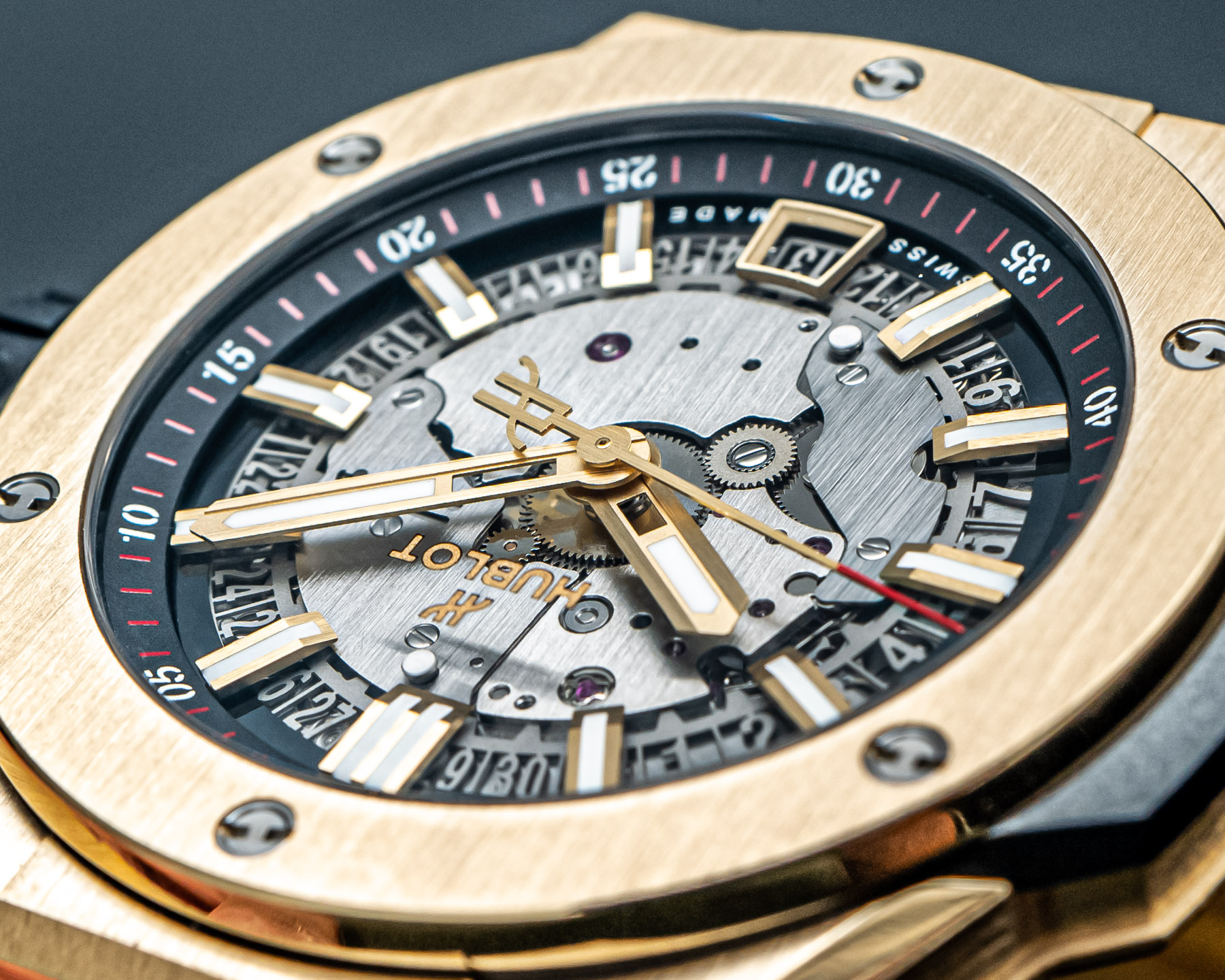
One conversation I know a lot of people are having about the Big Bang Integral Time Only is whether or not we’ll see a non-skeletonized dial in the future. Personally, that option would catapult this watch up on the list of luxury sports watches, but I also understand that Hublot has a design language and DNA that it wants to stick to across the Integral collection. There are Big Bang watches with non-skeletonized dials (like the “Original” Big Bang in 44mm), but it’s clear the newer lines are going skeletonized. That said, I do think the open look of the date wheel around the circumference of the dial is actually pretty cool even if the views of the upper bridges of a “time-only” movement aren’t as robust as those on the chronograph.
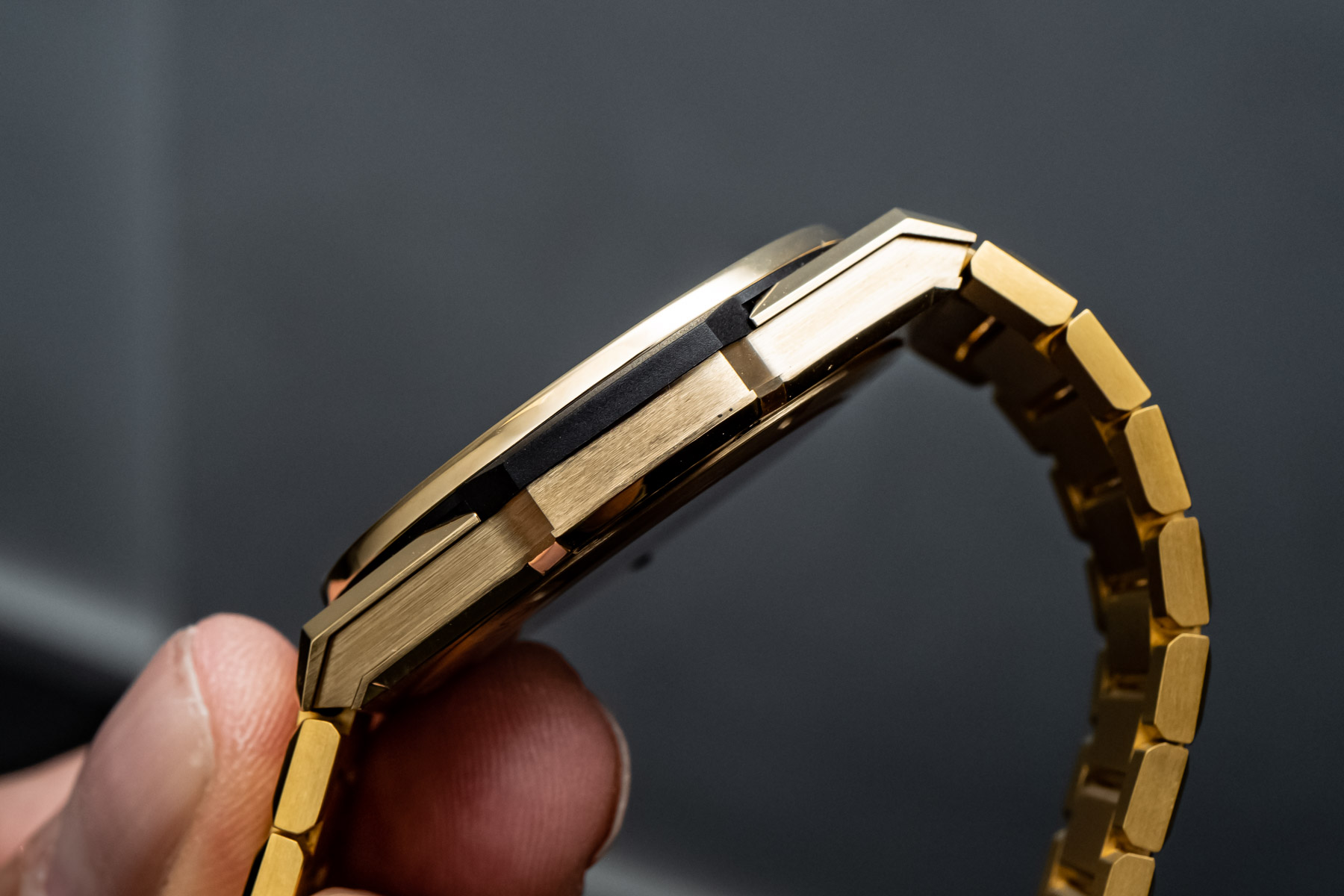
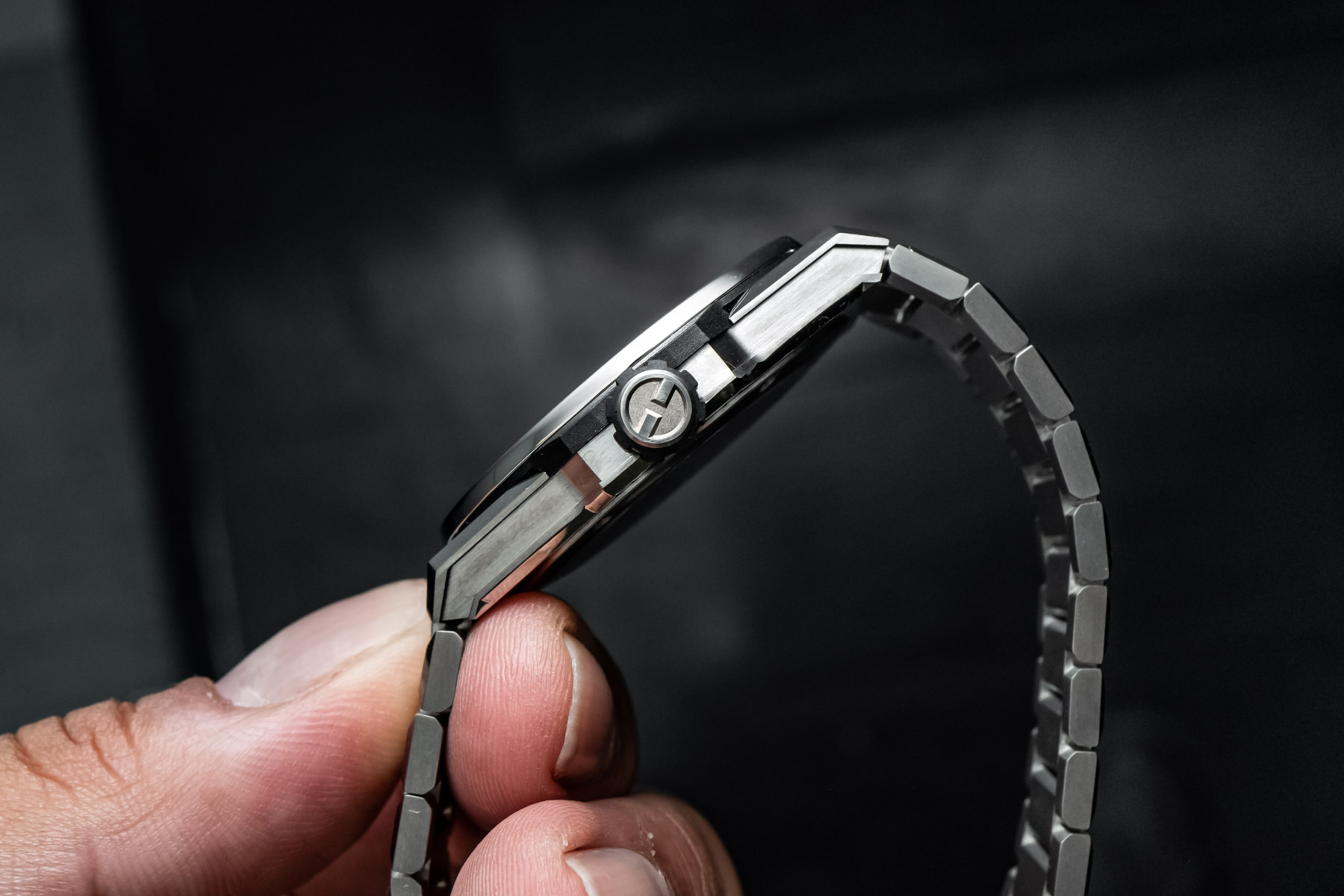
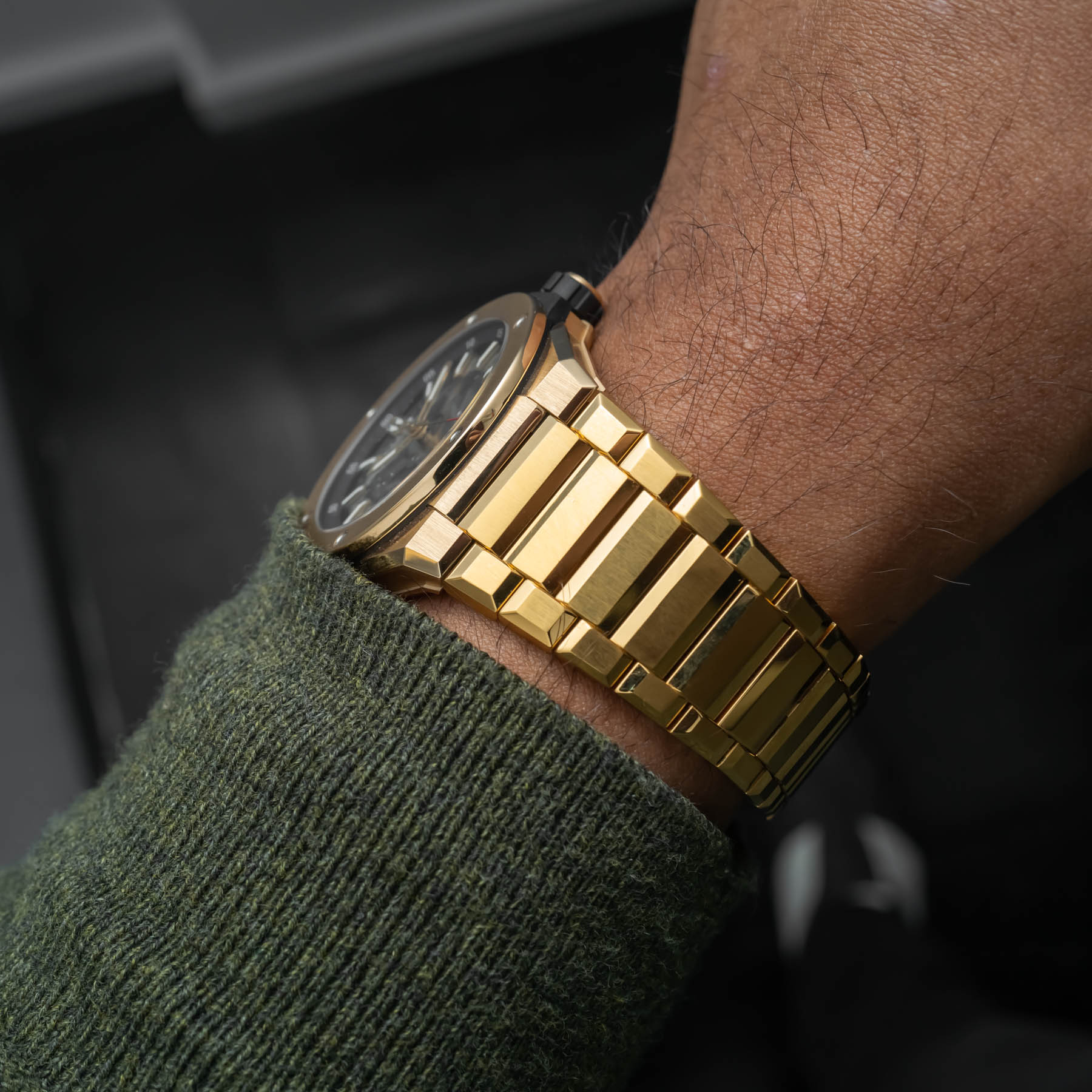
While the yellow gold variant obviously has that solid heft, the titanium and ceramic models are exceptionally light on the wrist. The slim and lightweight case matched with the previously mentioned excellent bracelet makes for a wearing experience that’s like nothing the brand has previously done. This wearability and toughness of materials (plus that 100m water resistance) makes for a very pleasantly unexpected versatile Big Bang.
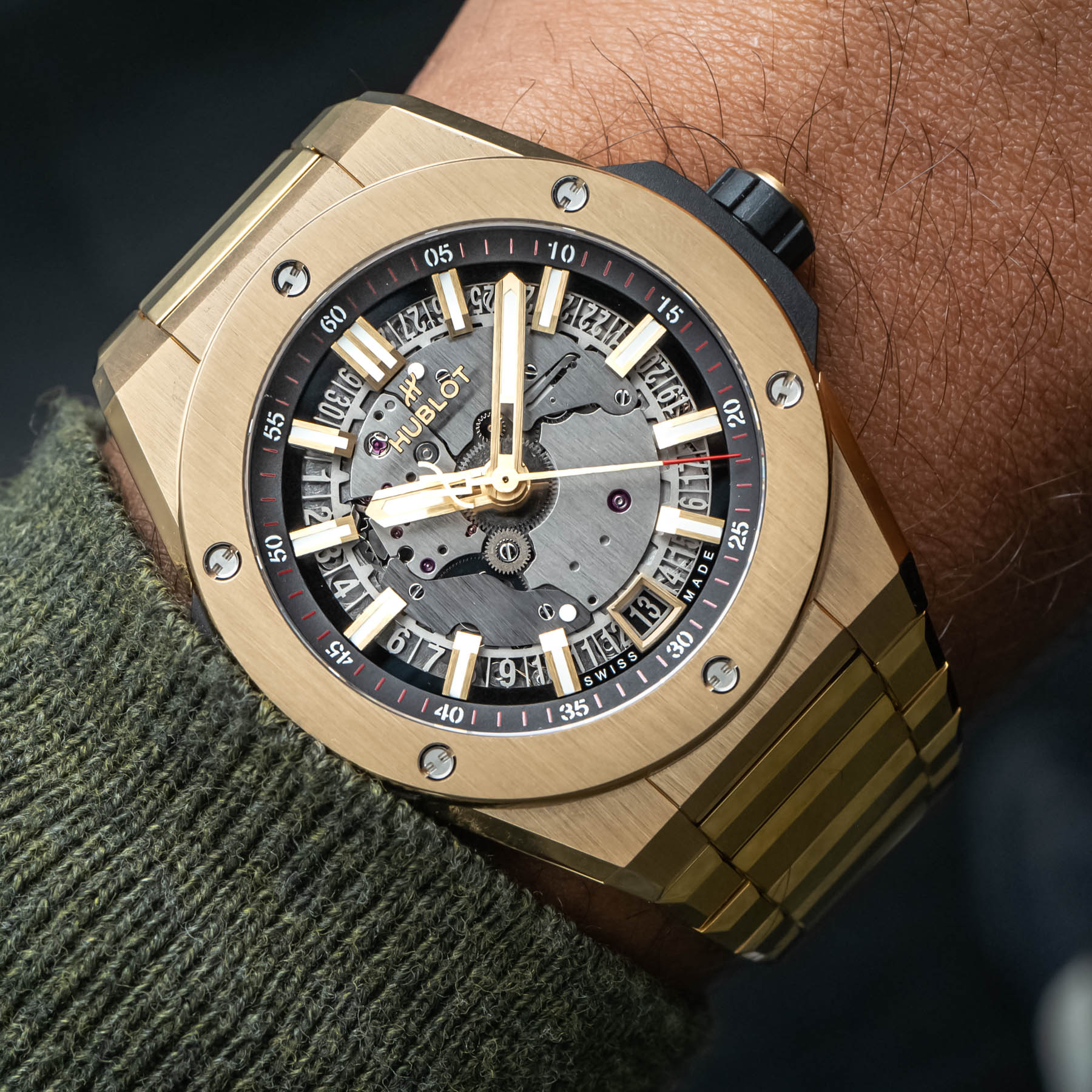
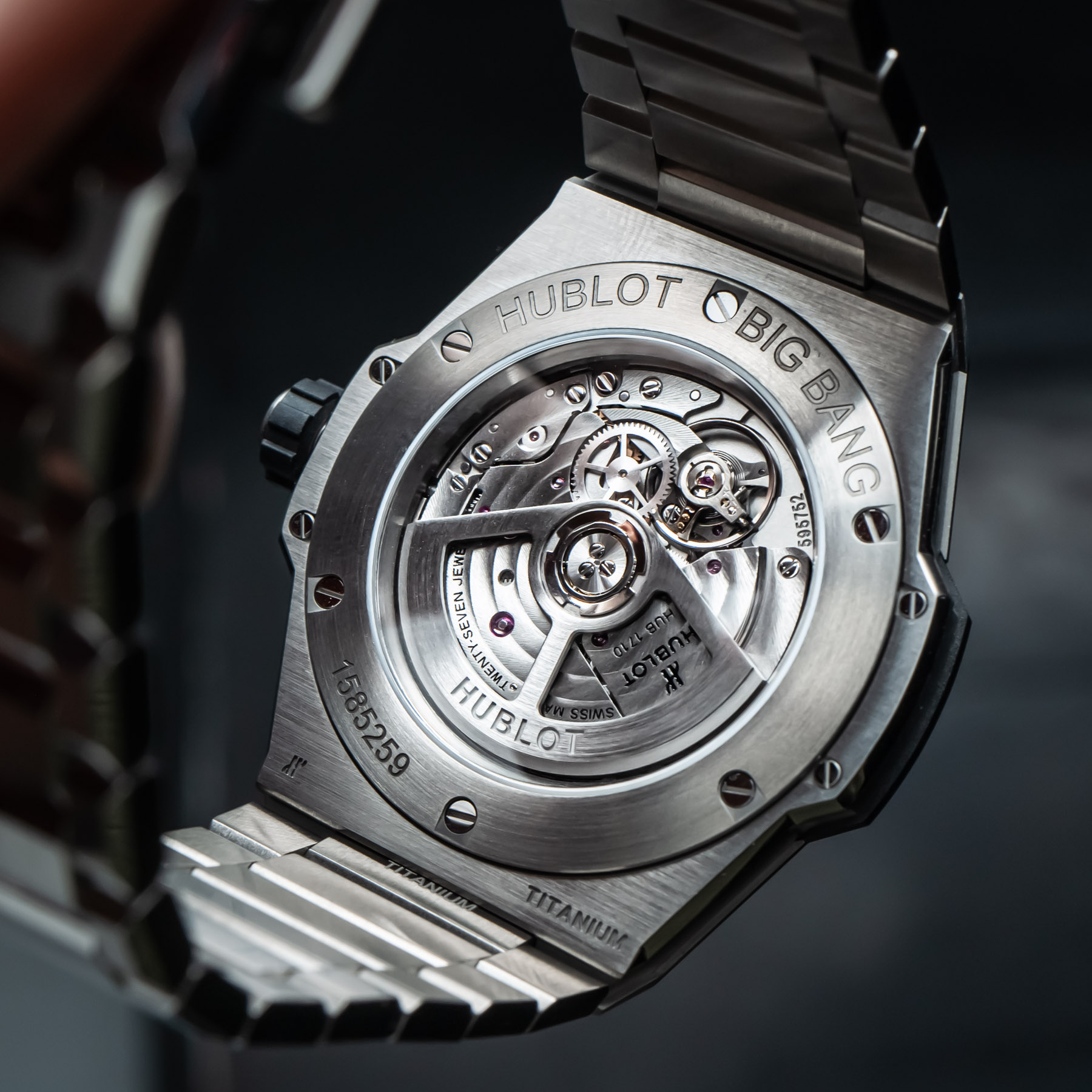
Turning the case over reveals the automatic MHUB1710 movement, which is a reworked version of the LVMH sister-brand Zenith Elite 670. With an unfussy and contemporary finish overall, this movement also has nicely done open-worked rotor, as well as Côtes de Genève throughout. Operating at 28,800 vph, the MHUB1710 has a 50-hour power reserve.
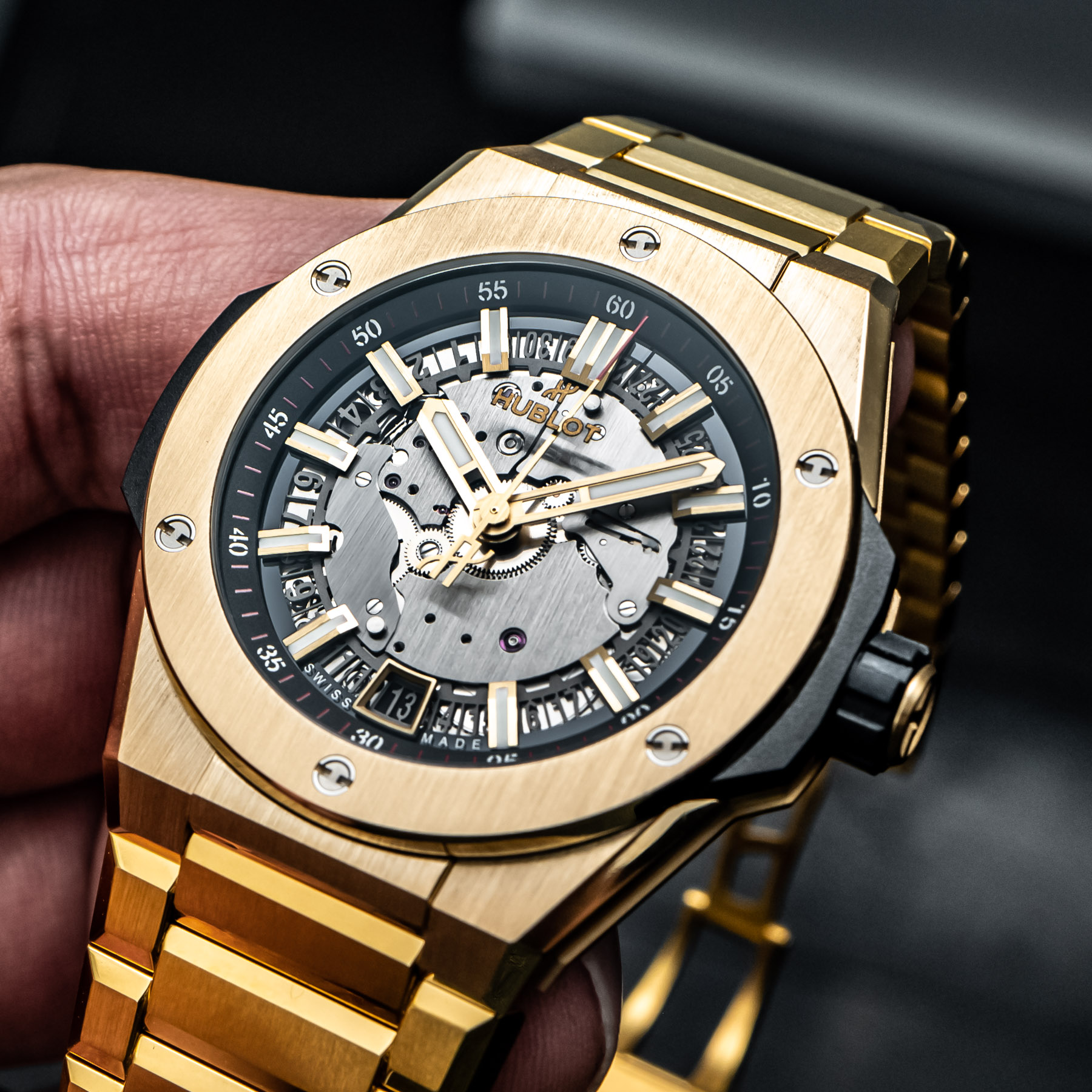
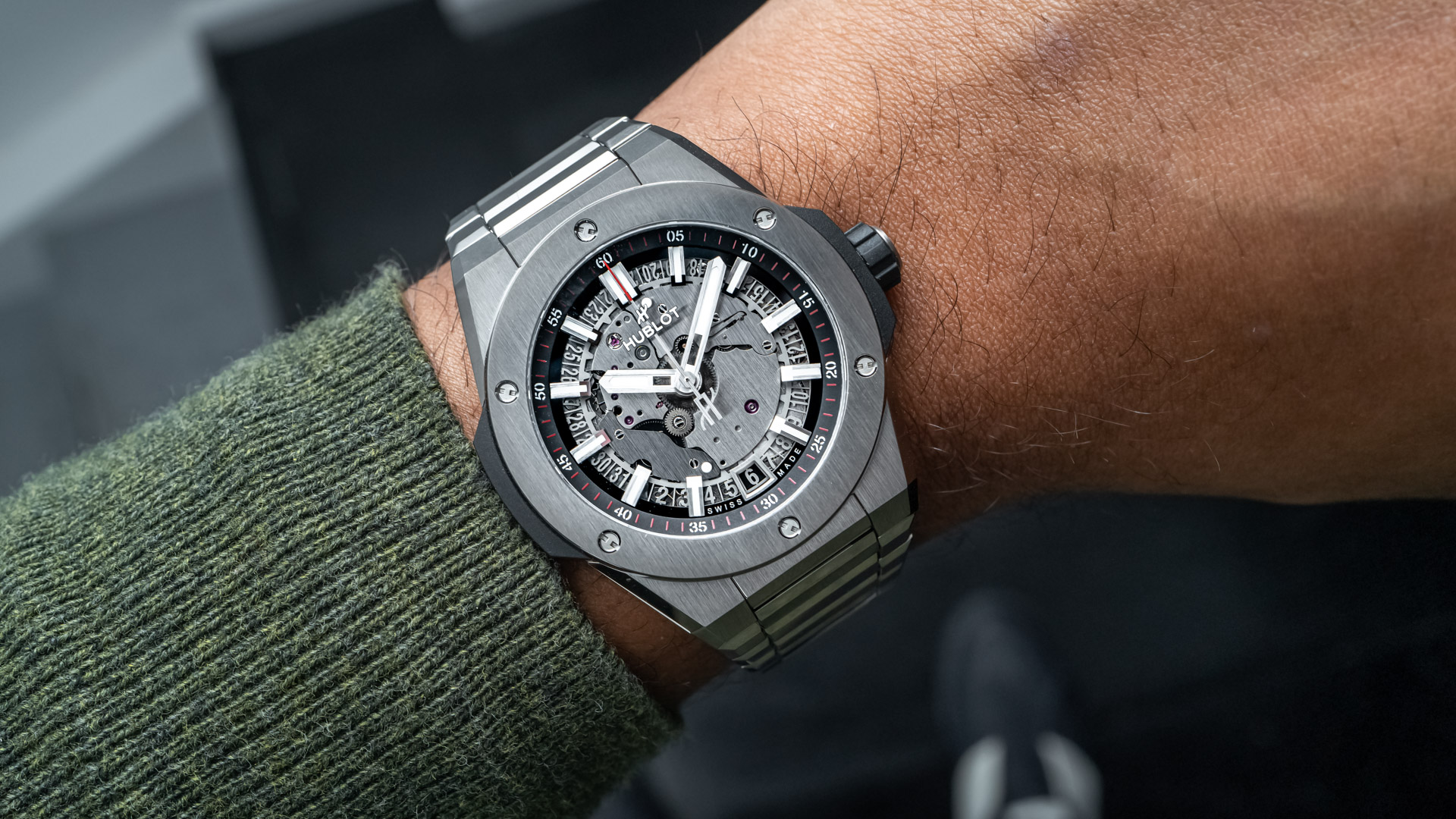
With the Big Bang Integral Time Only, Hublot has made a watch true to its brand DNA and design ethos that also appeals to a whole new segment of watch consumers. The case is robust, well proportioned, and slim and I would put the bracelet up against those from peer brands that have been making them for decades. While they’re not exactly a value proposition, I think Hublot has priced the collection very fairly when looking at the competitive market. The Hublot Big Bang Integral Time Only in the black ceramic is limited to 250 pieces and priced at $19,900; the standard production titanium model is priced at $17,800; and the yellow gold model is priced at $49,400. You can learn more at hublot.com.

